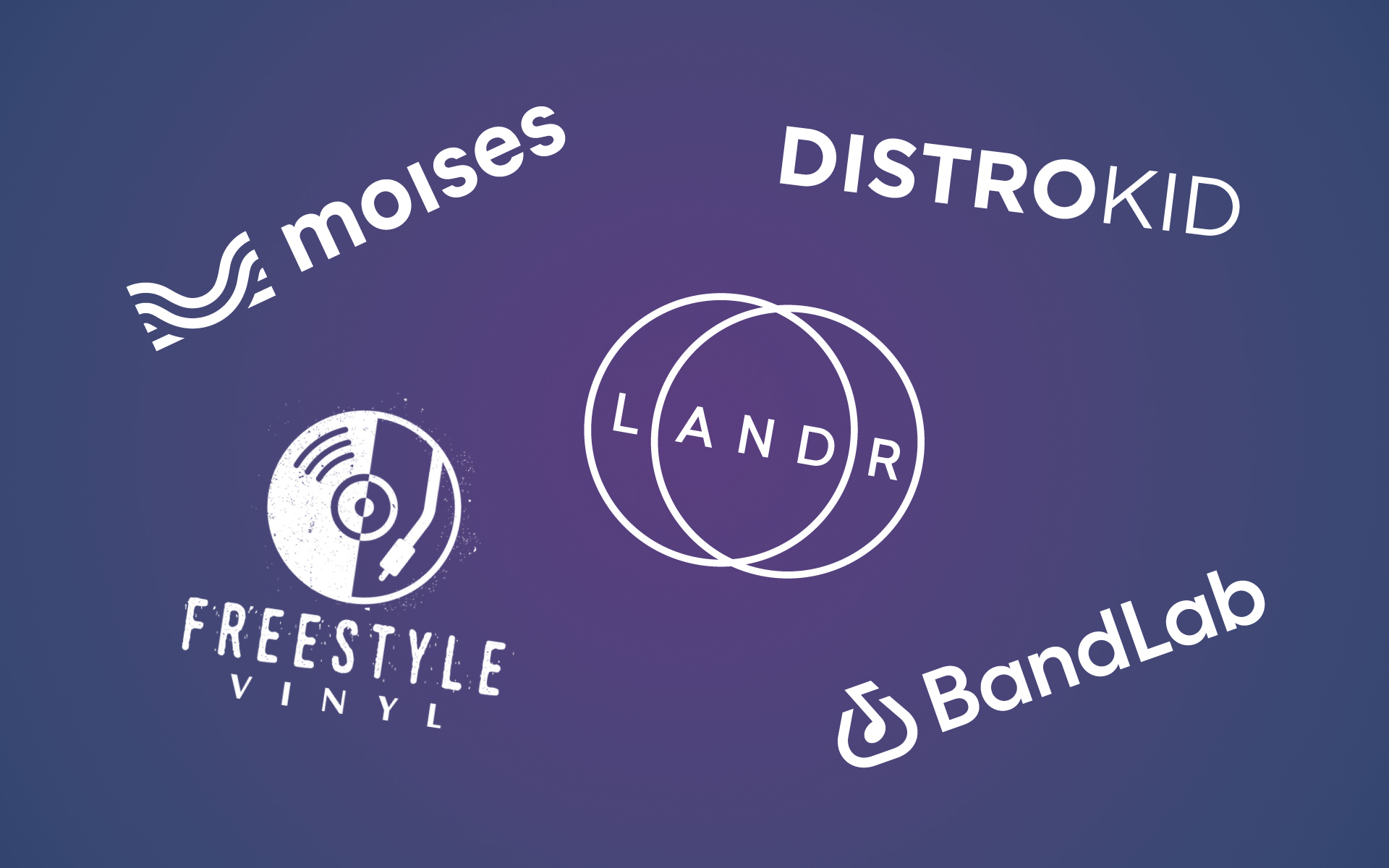The following information on how to create a budget for musicians, is adapted from Jonathan Feist’s Project Management for Musicians: Recordings, Concerts, Tours, Studios, and More, a textbook that accompanies his Berklee Online course Project Management for Musicians, which is currently enrolling.
There is constant pressure for projects to go over budget. It’s a universal truth. Undertakings always cost more than anticipated. The consequences for going over budget can be significant: requirement to take on debt, cancellation of parts of the project, loss of reputation, bankruptcy, and so on. If you’re working on a simple project with limited consequences for going over budget, use it as practice, so that when you do a larger project next time, the tools and processes will be familiar.
Project financial management happens within the context of your overall business and life. You pay taxes based on the calendar year, rather than your project plan. Projects often span multiple calendar years. So, the details of the project are a view of your overall life’s financial picture—a way of looking at and organizing a portion of your overall situation. You might work as a real estate mogul during the day and have a blues band at night.
If that type of band’s latest album loses a few hundred bucks, it might not be the end of the world. What’s important is having a clear grasp of what the project’s financial reality is, and what your real financial goals are.
For most of us, there is value in tracking project finances and setting a budget. Beyond being prepared for an IRS audit, understanding the details of how the money actually worked out for the project will inform decisions later on regarding whether and how to do similar projects in the future. So, there’s benefit to isolating these expenses from overall business or other life expenses. Some financial planners recommend setting aside different “buckets” of money for specific projects, like $15,000 to produce a new album, perhaps in its own bank account.
Financial management software, such as QuickBooks, makes this much easier, as do good online banking services. That said, such programs often have such vast levels of detail and possibilities that it is easy to get lost regarding what information is priority and actionable.
For the sake of this article, I will focus on the most essential accounting tools. There are essentially three types of financial documents that accountants use to monitor finances:
- registers (or ledgers)
- summaries
- reports
ENROLL IN PROJECT MANAGEMENT FOR MUSICIANS NOW
Transaction Registers
Registers record every transaction, and thus, your project register is the most basic and fundamental financial mechanism. They provide the most detail of any financial statement, organized by date. Ideally, they show items and their accounts—the type or category of transaction. You will probably have a single register for all financial transactions in your business.
Your checkbook and credit card statements are types of registers. If you do nothing else, keep a register of your transactions—including what you pay using cash, check, credit card, PayPal, Venmo, and so on.
Registers are sometimes made much more useful by including a column showing a running balance, at the right. You could also start with an opening balance, if you’ve devoted a nugget of money to your project and want to have a quick look at how that’s going.
A few lines from a transaction register for your tour might look like this:
| DATE | DESCRIPTION | COMMENT | ACCOUNT | AMOUNT | BALANCE |
| 1/11 | Opening balance | Raised via IndieGoGo | Donations | 5,000 | 5,000 |
| 1/22 | Loud Enough Studios | Recording and mixing new album | Album production | -2,220 | 2,800 |
| 2/15 | Claudia’s Tees | 200 shirts | Merchandise | -500 | 2,300 |
| 2/18 | R.T. Finn Mastering | Mastering (deposit) | Album production | -500 | 1,800 |
| 2/25 | Four George Photo | Band photos | Ads | -500 | 1,300 |
| 3/1 | R.T. Finn Mastering | Mastering (balance) | Album production | -700 | 600 |
| 3/8 | Dub House | 500 LPs and 500 CDs | Album production | -1,000 | -400 |
| 3/10 | Merlino Design | Graphic design for flyers | Ads | -125 | -525 |
| 3/10 | FooFoo Copies | 1,000 flyers | Ads | -125 | -650 |
| 3/15 | Lillian Lounge | Fee | Performance | 300 | –350 |
| 3/15 | Lillian Lounge | 50% door | Performance | 106 | –244 |
| 3/15 | Lillian Lounge | Sold 4 T-shirts, 2 CDs, 1 LP | Merchandise | 90 | –154 |
As you can see in the Balance column, things are looking a little grim, though they get better once the actual tour starts.
There are two points of housekeeping regarding registers I want to mention: First, they should be reconciled monthly with bank statements and credit cards, to be sure that neither you nor your bank made any errors. Second, be sure to track all cash transactions, as we do with the door income and merch sales, above (separate from fees paid by venues, which are via check).
Cash easily slips through our fingers, but it is as important to track its whereabouts as it is to track checks. Avoid paying with cash, if you can. Credit cards and checks are also tracked by their banks, which makes record keeping and future research easier.
Summaries
Summaries show us all the transactions organized by account (expense categories or types), to help you track what each dimension of that project costs. Financial management software generally lets us view account summaries automatically, if we assign accounts to each transaction in our register. You can also program Excel to assign account tags, or you could simply do it manually.
Summaries are necessary in part because of the laws of physics—only so much can fit on a page and remain legible. A standard 8.5 x 11-inch piece of paper can legibly show about 55 lines of text, but a project might include hundreds or thousands of transactions. Summaries let us present a higher-level view of the finances and get an overview all on a single page, even for vast projects.
Obviously, summaries must correspond to the transaction register with 100 percent accuracy. This is not an issue with software-driven accounting, but if you are managing financial documents manually, without linked documents in financial software, whenever the transaction register changes, all derivative documents become obsolete and need to be updated.
Account Summary for Your EP (Subdivided by Account)
ALBUM PRODUCTION
| DATE | DESCRIPTION | COMMENT | ACCOUNT | AMOUNT |
| 1/22 | Loud Enough Studios | Recording and mixing new album | Album production | 2,200 |
| 2/18 | R.T. Finn Mastering | Mastering (deposit) | Album production | 500 |
| 3/1 | R.T. Finn Mastering | Mastering (balance) | Album production | 700 |
| 3/8 | Dub House | 500 LPs and 500 CDs | Album production | 1,000 |
| Total $4,400 |
MERCHANDISE
| DATE | DESCRIPTION | COMMENT | ACCOUNT | AMOUNT |
| 2/15 | Claudia’s Tees | 200 Shirts | Merchandise | 500 |
| Total $500 |
ADS
| DATE | DESCRIPTION | COMMENT | ACCOUNT | AMOUNT |
| 2/25 | Four George Photo | Band photos | Ads | 500 |
| 3/10 | Merlino Design | Graphic design for flyers | Ads | 125 |
| 3/10 | FooFoo Copies | 1,000 flyers | Ads | 125 |
| Total $750 |
Alternatively, you might see the register laid out with the accounts in columns. This is a bit more difficult to give a complete picture on standard 8.5 x 11 paper, but it provides a clear way to scan a spreadsheet and see transactions of similar types. Orient the page in landscape mode, to fit more columns, and if you can, print on 11 x 17 paper, if it gets too wide.
An old accounting trick: total each column, and also keep a running total in each row. Then, calculate the overall total in two ways: at the bottom (“foot” in accounting parlance) of the running total column, and then by totaling all your column totals together. This is called cross footing, and it is an opportunity to double-check your math. As an abstract concept, cross-footing many types of calculation, analysis, or other types of activity can help control and confirm the accuracy of many kinds of endeavor—viewing it from multiple angles, and seeing whether you arrive at the same conclusion.
Account Summary for Your EP (Accounts in Columns)
| DATE | VENDOR | ADS | ALBUM PRODUCTION | MERCH | TOTAL |
| 1/22 | Loud Enough Studios | 2,200 | 2,200 | ||
| 2/15 | Claudia’s Tees | 500 | 2,700 | ||
| 2/18 | R.T. Finn Mastering | 500 | 3,200 | ||
| 2/25 | Four George Photo | 500 | 3,700 | ||
| 3/1 | R.T. Finn Mastering | 700 | 4,400 | ||
| 3/8 | Dub House | 1,000 | 5,400 | ||
| 3/10 | Merlino Design | 125 | 5,525 | ||
| 3/10 | FooFoo Copies | 125 | 5,650 | ||
| TOTAL | 750 | 4,400 | 500 | Grand Total $5,650 |
Reports
Reports use summaries of the transaction data to help you get an overall view of how the project is going. There are many types of reports. Central to project accounting are profit/loss statements. These summarize your assets (what you’ve got or expect) and liabilities (funds that you pay or expect to pay), and give you the bottom line: whether or not you are financially on track.
Here’s a simplified P&L statement for a band tour. You can see the amount for that account budgeted for the project, how much money was actually spent, and the difference. The total difference is your indication of how the project is going, overall. By keeping this up to date, you can make future decisions on the project that will help bring finances back in line, if necessary.
If a tour is losing money (overall, actual expenses are greater than what you had budgeted), for example, you might take austerity measures (pizza instead of sushi; sleep at a friend’s house instead of a hotel), or try to rush and do more publicity, or try to find an additional gig on the way. If it’s going unusually well, you might start thinking about a celebratory dinner, after the project is done. The point is to be aware of how it’s going while there’s still time to change course, if necessary. The % Variance column gives you an overall sense of how you’re doing—how far off budget you are.
P/L Statement
| BUDGET | ACTUAL | DIFFERENCE | % VARIANCE | |
| Income | ||||
| Donations | 5,620 | 7,270 | 1,650 | 29% |
| Merch sales | 530 | 600 | 70 | 13% |
| Performance | 1,350 | 1,486 | 136 | 10% |
| Total Income | 7,500 | 9,356 | 1,856 | 35% |
| Expenses | ||||
| Album Production | 6,000 | 5,400 | 600 | 10% |
| Merch | 750 | 668 | 82 | 11% |
| Art | 750 | 700 | 50 | 7% |
| Total Expenses | 7,500 | 6,768 | 732 | 10% |
| Grand Total | 0 | 2,588 | 2,588 |
Notice that the grand total for the budget is zero. This means the budget is balanced: the project income equals the projected expenses. That’s good! But the way we made this balance out is by finding the minimum number we must raise in donations. Overall, we came out 13 percent ahead of where we had anticipated. Perhaps a more useful number, though, is to realize how far off we were regarding what donations we could rake in. Next time around, we can take notice of that, and be secure in estimating a bit higher, there.
A realistic and clear grasp of your project’s financial reality is critical to your career’s viability and longevity. Craft these reports so that they are easy to read and so that they reveal the important information—that is, the “bottom line” (meaning the project’s overall profit or loss). Ultimately, the fundamental question you are trying to answer is usually a simple one: how much money are you making or losing? Answering this accurately is key to any career, and can be very helpful in crafting an accurate financial projection.












